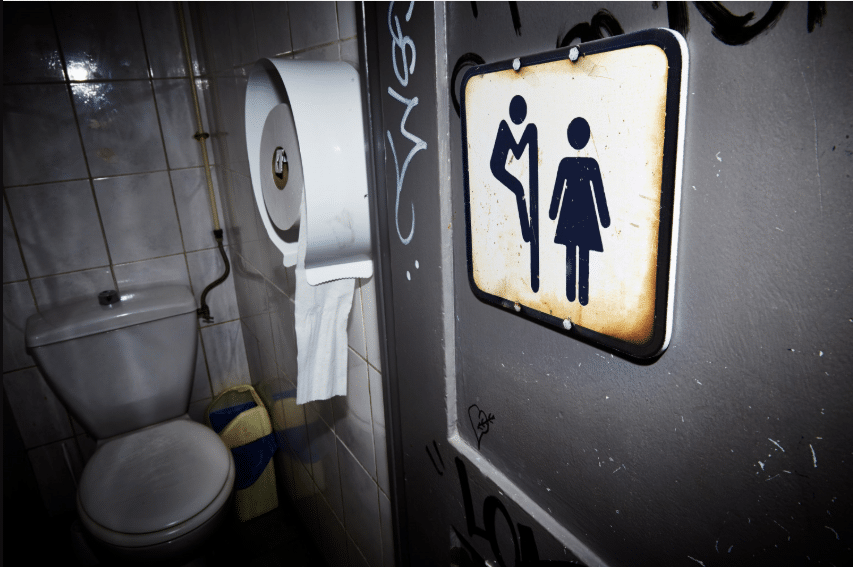Gender-neutral toilets threaten the security of women and girls, and self-ID disregards women’s need for female-only spaces.
Gender-neutral toilets are a good thing. That’s only if you are rich, white and Western. If you are African, Asian, or Latin-American, sex-segregated toilets are a good thing. Nothing exposes the hypocrisy of the trans debate more than the issue of toilets.
If we listen to many Western leaders, politicians and human rights activists, it is good practice, and in line with international standards of human rights, to get rid of sex-segregated toilets and allow individuals to self-ID in their toilet choice. So a boy or a man who identifies as a girl or a woman, even without any medical, or other, intervention or modification, can, and indeed must be able to, use female toilets. With a remarkable absence of good taste and understanding of the issues faced by women and girls around the world, Scottish MP Mhairi Black proudly wore a T-shirt stating ‘You can pee next to me’

Scottish First Minister Nicola Sturgeon declared that she wanted to bring Scotland in line with ‘international best practice’ in allowing transgender people to self-ID and to use their preferred toilets.
Gaining access to female toilets is almost obsessively requested by trans activists. The references are too many to mention but Mhairi Black’s T-shirt is a good indication of the (depressingly low) level of the debate, both in showing the importance given to the topic and the need by the trans women community to win over women to the cause.
Allowing self-ID means that it will be not only trans women who will be able to use female toilets, but any individual desiring to do so. Already in the UK, even before self-ID has become law, there are signs inviting women not to question any male-presenting individual found in female toilets. See for example this campaign by the LGBT+ Society at the University of Bristol.

Even ignoring the obnoxiously patronising ‘they know better than you’-tone, this sign invites women (of course) to ignore situations that are potentially dangerous for them, as any girl will have been socialised to be weary of men in public spaces where girls and women are in a vulnerable position, such as toilets and changing rooms.
But if we zoom out from the Western, mostly Anglo-Saxon, world where trans rights are at the top of the political and human rights agenda, the landscape is quite different.
UNESCO, the culture and education organisation of the United Nations, strongly promotes sex-segregated toilets to improve the educational chances of girls around the world. On the 8th of March 2018 (Women’s Day) the Independent reported UNESCO’s call for single-sex toilets, needed to improve girls’ access to education.
The need to provide single-sex toilets for girls and women is a well-recognised international human rights issue, not only in the context of educational opportunity but also in humanitarian crisis situations, including, by way of example, the Rohingya refugee crisis in Bangladesh. Many international human rights NGOs and governmental organisations stressed the importance to provide privacy, safety and security to female refugees of all ages (see for example UNICEF’s article ‘When going to the bathroom takes courage’ and Oxfam’s report ‘Designing hygiene and sanitation facilities in Rohingya refugee camps: for women by women’.
We know human rights to be universal, and indeed, Western countries strongly push the human rights’ universality discourse against relativist resistance by many non-Western countries. So, there is a need to achieve some clarity in this debate. Are single-sex toilets a good thing or a bad thing? What makes a Nigerian or a Vietnamese girl different from a Scottish girl? Why do girls need single-sex toilets in Africa or Asia but not in Europe or North America? Surely we are not saying that African and Asian men are different, more dangerous, than European or North American men? Or are we implying that girls in the developing world are weaker, and more vulnerable, than Western girls?
In the end, it seems to me, that toilets are a red herring. In fact, it is not difficult to provide individual toilets and many public places already have them. Their use as a validation tool (‘passing’ as a woman or imposing one’s own gender identity which is opposite to one’s own sex identity, sometimes aggressively so) seems to be the main point. This is done at the expense of and in tension with international campaigns for single-sex toilets for girls and women around the world.







